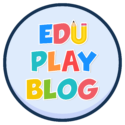
As a self-proclaimed play enthusiast, I must say that adding playful opportunities for students to interact with me and each other has created so much joy on the days I needed it the most. You may be wondering what exactly is Play-Based Learning? Let me take a moment to share a paraphrased definition. Play-based learning is adult-directed. As a teacher you’re going to organize the play for your students. More than likely, the play that takes place will be aligned to a specific skill or standard that will be tested. At the end of the day, whatever the child engages with, it is designed to teach.
I wanted to share the “charcuterie board” of play, based on what I have found during my research of the subject. When I read the, “Play as a Spectrum” chart shared by Kathy Hirsh-Pasek and Helen Hadani in their article about play and developing 21st century skills, I felt a sigh of relief. For years I have been trying to understand the different types of play that could be used in the classroom and this chart ended my search! Shout out to them for including the “play as a spectrum chart in their article

Free play is exactly what it sounds like: free! It is play in it’s purest form. The “Play and Playground Encyclopedia” describes play as, “unstructured, voluntary, child-initiated activity that allows children to develop their imaginations while exploring and experiencing the world around them.” Think about a child playing on a swing set and pretending to be an airline pilot. Think about that same child going inside of their school and creating a structure with blocks on the floor. The child is alone and unbothered. That’s free play. When children are allowed to explore the world around them, uninterrupted they’re truly free to play.

From the journal article, “Guided Play: Principals and Practices” The authors share that, “Guided play refers to learning experiences that combine the child-directed nature of free play with a focus on learning outcomes and adult mentorship.” Think about a teacher placing materials on a desk and then asking a group of students to create a bridge. The teacher then shares a rubric that includes how many triangles and arches their bridge must include and sticks around to support when prompted.

We are all familiar with games but are you familiar with the term “gamify?” When I think about student engagement through play-based learning, I think about ways to gamify the lesson. John McCarthy wrote an article that can be found in Edutopia’s archives about gamification. He says that gamification is the process of, applying game elements to non-game environments to encourage higher participation and motivation.” Think about introducing vocabulary words to students and every time they use them within the correct context they earn a badge or “level up” to earn classroom rewards or perks.
Co-opted play is similar to guided play. Co-opted play is, “initiated by the child and adults step in to direct the play towards a certain learning goal. Think about a child playing on the floor with blocks of all different shapes and colors. A teacher walks up and says, “can you pass me the blue square?” The teacher may have a learning goal for that child to identify their shapes and colors by the end of the week. That’s co-opted play.

I know you’re wondering how to combine play-based learning and direction instruction. Well, I am here to say that it’s possible. The 2016 Project Zero research team shares a really cool example of how a teacher asked a group of students to draw a map of the world on an orange! When you combine traditional concepts, with a playful element, you have PBP direct instruction. Check out their paper titled, “Toward a Pedagogy of Play” to learn more.

Setting up conditions for playful interactions to occur is an area of PBL that I really enjoy. When I’m connecting play-based learning to a specific lesson, I push myself to think about the different ways to add just one element of play. To set up a playful interaction during an into to geography unit, I decided to purchase a huge transparent globe. I asked students to take turns locating the world’s continents and oceans. We tossed the globe around the room until all continents and oceans were named. This allowed for playful interactions to occur between students, which is a really cool part of joyful PBL.

